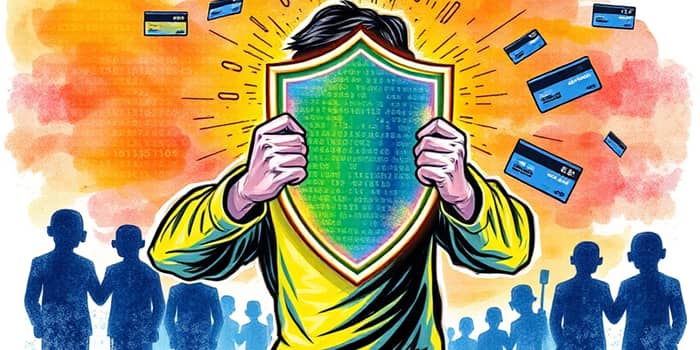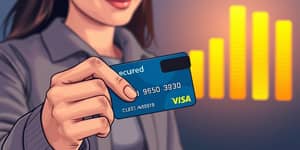In today’s rapidly evolving digital economy, credit cards have become an essential tool for daily transactions, travel, and online shopping. However, as we embrace the convenience of tap-and-go and one-click payments, criminals exploit vulnerabilities to carry out unauthorized transactions. The emotional toll of discovering a fraudulent charge can be devastating, eroding trust and causing financial stress. To shield yourself from these threats, understanding the landscape of credit card fraud and adopting proactive measures is crucial.
As payment technologies advance, fraudsters refine their methods. From sophisticated phishing schemes targeting sensitive information to discreet skimming devices attached to ATMs and point-of-sale terminals, the opportunities for theft multiply. By learning how criminals operate and employing best practices, you can build a sturdy defense and reclaim control over your financial wellbeing.
Understanding Credit Card Fraud
Credit card fraud occurs when someone makes purchases or accesses funds through unauthorized use of a credit card or its credentials. This broad category encompasses a variety of schemes, often categorized by the way information is obtained or misused.
Card-present fraud involves the physical theft or replication of a card, frequently using skimming devices that read the magnetic stripe data. In contrast, card-not-present transactions in online commerce rely on stolen information, allowing criminals to make purchases without ever seeing the card itself.
Phishing and smishing attacks trick individuals into revealing personal or payment data through fraudulent emails or text messages. Meanwhile, account takeover attacks occur when criminals gain full control of an existing credit card account, changing passwords and settings to hide their activity. A related and emerging threat is synthetic identity fraud, where fraudsters create entirely new identities by combining real and fictitious information to open new credit accounts.
Common Types of Credit Card Fraud
Recognizing the main categories of fraud can help you spot warning signs and adopt the right countermeasures. Below is a concise overview:
How to Detect and Respond Promptly
Early detection and swift action can mean the difference between a minor inconvenience and a major financial loss. Most banks and card issuers offer alert systems that notify you of any unusual activity, such as transactions above a certain threshold or purchases in unexpected locations.
By setting up real-time notifications, you can catch small “test” charges—often the precursor to larger fraudulent transactions—before they escalate. Under U.S. law and major card network policies, consumers typically enjoy a complete zero-liability fraud protection guarantee, provided they promptly report any suspicious activity. If you notice an unfamiliar charge, contact your issuer immediately to freeze or cancel the card and initiate an investigation.
Strategies to Protect Yourself
Adopting disciplined habits and leveraging available tools can greatly reduce your risk of falling victim to credit card fraud. Consider the following essential practices:
- Review account statements frequently and regularly monitor your account statements for any unauthorized charges.
- Enable multi-factor authentication for enhanced security on all financial accounts to add an extra layer of defense.
- Never save card details on retailer websites unless necessary; use digital wallets or one-time payment tokens.
- Avoid making purchases over public Wi-Fi or unsecured HTTP connections.
- Inspect ATMs and point-of-sale devices for hidden skimming devices before inserting your card.
Advanced Prevention Techniques
Beyond basic precautions, advanced security measures can fortify your defenses. EMV chip technology, now standard in most cards, generates a unique code for each transaction, making it much harder for criminals to clone cards. For e-commerce, 3D Secure 2.0 authentication layers introduce an additional verification step, such as a one-time passcode, with minimal friction.
Tokenization and encryption abstract your card data during online transactions, replacing sensitive information with randomly generated tokens that are useless if intercepted. Biometric authentication—like fingerprint or facial recognition—adds another barrier for would-be attackers. By combining these tools, you create overlapping security layers that dramatically lower your susceptibility to fraud.
What to Do If You’re a Victim
Even the most vigilant individuals can encounter fraud. If you discover unauthorized charges, follow these steps to mitigate damage:
- Contact your card issuer immediately to report the fraudulent transactions and request a card replacement.
- Initiate a fraud alert or credit freeze with the major credit bureaus to block new accounts opened in your name.
- Document all communications with your bank, noting dates, times, and representative names.
- Dispute unauthorized charges according to your issuer’s procedures, providing any requested documentation.
- Review your credit reports for several months to ensure no new lines of credit have been opened without your consent.
Business Responsibilities
Companies that process credit card payments bear significant responsibility for preventing fraud. By adopting robust security practices, they protect both their customers and their reputation. Key measures include:
- Implement encryption and secure payment processing systems and encryption to safeguard cardholder data in transit and at rest.
- Require address verification (AVS) and CVV checks for all card-not-present transactions.
- Utilize machine learning–based fraud detection tools to flag anomalous transaction patterns.
- Regularly train employees to recognize suspicious behaviors and to verify physical card security features.
- Keep point-of-sale terminals, ATMs, and e-commerce platforms up to date with the latest security patches.
Conclusion
Credit card fraud is an ever-present challenge in our modern financial ecosystem. Yet, by arming yourself with knowledge, adopting diligent habits, and leveraging advanced technologies, you can build a formidable defense against would-be thieves. Secure your cards, stay alert, and respond promptly to any warning signs. These steps not only protect your finances but also uphold the integrity of the payment systems we rely on daily.
Empower yourself with proactive vigilance and a commitment to digital safety. In doing so, you transform from a potential target into a resilient guardian of your own financial future.
References
- https://stripe.com/resources/more/credit-card-fraud-detection-and-prevention
- https://www.equifax.com/personal/education/credit-cards/articles/-/learn/how-to-help-prevent-credit-card-fraud/
- https://www.cnb.com/personal-banking/insights/credit-card-fraud-prevention.html
- https://www.bitdefender.com/en-us/blog/hotforsecurity/7-types-of-credit-card-fraud-how-your-businesses-can-avoid-them
- https://www.fidelity.com/learning-center/personal-finance/10-credit-card-security-tips
- https://www.experian.com/blogs/ask-experian/credit-education/preventing-fraud/
- https://www.infosysbpm.com/blogs/fraud-retail/credit-card-fraud-prevention.html
- https://cybeready.com/top-10-credit-card-fraud-detection-solutions-in-2023/










